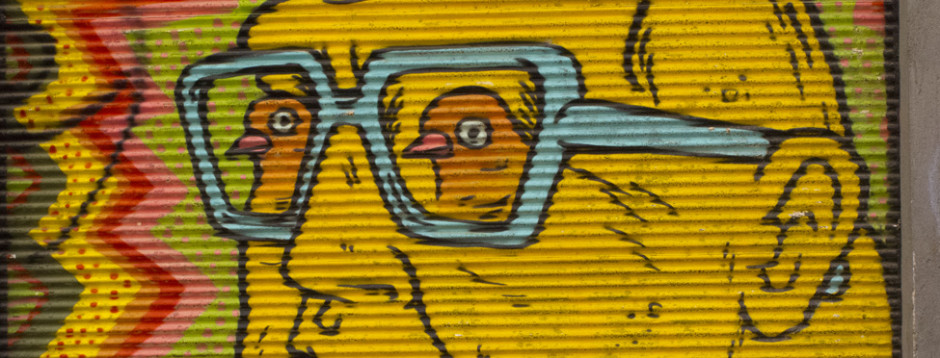on February 12, 2016

Opening night of the new San Francisco Arts Commission (SFAC) Gallery (all photos courtesy the San Francisco Arts Commission)
SAN FRANCISCO — The 1960s upset the status quo in nearly all realms of American life. The decade issued radical ways of thinking about, making, performing, and exhibiting art, and San Francisco was at the vanguard. In 1970, the Arts Commission of the City of San Francisco, feeling that there needed to be an alternative way to present new art to the city, opened an alternative art space. The name? “Capricorn Asunder,” no less! No one is quite sure where the name came from, but it morphed eventually into the San Francisco Arts Commission (SFAC) Galleries, a more prosaic moniker for what has become a vital and growing part of the Bay Area art scene. The main contemporary gallery bounced around the Civic Center neighborhood, inhabiting various temporary spaces before closing its doors in 2013 in preparation for the move into the new space.
Now, nearly 50 years later, the city has renewed its commitment to the value of municipal alternative art and opened a 4,000-square-foot gallery and community space in the recently renovated Veterans Building in downtown San Francisco. The gallery, which had its public opening on January 22 with a crowd of well over 1,000 Bay Area arts supporters and artists, joins two other spaces that the Arts Commission runs in the same Civic Center neighborhood. One, the SFAC Galleries Art at City Hall, exhibits both fine art and editorial photography with a strong focus on civic and social issues; the other, the SFAC Galleries Window Installation Site, is primarily an installation space, with large windows onto the street that allow near-constant interaction with the public. The three spaces make up a triad of contemporary art public programming, shepherded by longtime Gallery Director and Curator Meg Shiffler, that is both ambitious and accomplished, addressing local art interests while embracing the broader international art world.
The $156 million renovation of San Francisco’s historic Veterans Building was needed desperately to address both seismic and aesthetic concerns. The once-glorious structure, built in 1931, was showing its age and needed to be brought up to modern earthquake codes. Rolling the construction of a new SFAC gallery into this massive project made sense: The building hosts programs and offices for war veterans, a variety of art organizations, and contains the 900-seat Herbst Theatre as well as the brand new San Francisco Opera Lab, a new space devoted to contemporary vocal music.
In a region where shifting demographics has caused rents to skyrocket, driving out longtime residents and artists (sound familiar New Yorkers?) this is not only a welcome addition to an endangered local art scene but a determined stance by the City of San Francisco to try to keep the city viable for its artistic community. Twitter, Uber, and Dropbox, to name only a few, have all moved into the city, many of them into the South of Market area that had traditionally housed small alternative spaces and galleries. In the past two years, many downtown San Francisco commercial galleries have either closed or been forced to move because of escalating rents that make NYC look like a bargain.

Installation view of the new San Francisco Arts Commission (SFAC) Gallery
I stopped by the Veterans Building to chat with Shiffler. I was curious about the very notion of a “municipal gallery” and its importance to San Francisco. “Municipal galleries come in all shapes and sizes,” said Shiffler, “but most commonly they are nontraditional spaces, or interstitial spaces in public buildings that house artwork by local artists.” According to her, municipal exhibitions are often curated by a peer panel and coordinated by an Arts Commission or Department of Cultural Affairs. In addition to these smaller programs, there are municipal galleries that rival mainstream museums, such as the City of Chicago’s program at the Chicago Cultural Center, or LA’s Municipal Art Gallery housed in a Frank Lloyd Wright structure in Barnsdall Art Center.
Shiffler continued, “One of the differences in San Francisco is that the programs have always been lead by a director/curator, which has allowed the SFAC Galleries to establish a strong, ever-evolving, and particular aesthetic identity, at times quite radical.”

The new San Francisco Arts Commission (SFAC) Gallery, under construction
Though the three galleries frequently show artists of international stature, their primary curatorial focus remains on the Bay Area art scene. Inaugural exhibitions in the new space include, Bring It Home: (Re)Locating Cultural Legacy Through the Body, a group exhibition of Bay Area artists examining issues of cultural identity; Susan O’Malley: Do More of What You Love, a posthumous exhibit of the young artist’s work and legacy; and ENTER: 126: Coalescence, by Annette Jannotta and Olivia Ting, the first of a new yearly site-specific commission program.
This very public display of support should be applauded in a time when cities are strapped for funds and the arts often slip down the list of perceived importance. While the SFAC can’t rescue artists from high rent and shrinking real estate, and while it can’t claim to represent all of the Bay Area’s art community, it is a uniquely local institution, one that has nurtured artists for half a century.

Installation view of the new San Francisco Arts Commission (SFAC) Gallery
The new San Francisco Arts Commission (SFAC) Main Gallery is now open at 401 Van Ness, Ste. 126, San Francisco.

